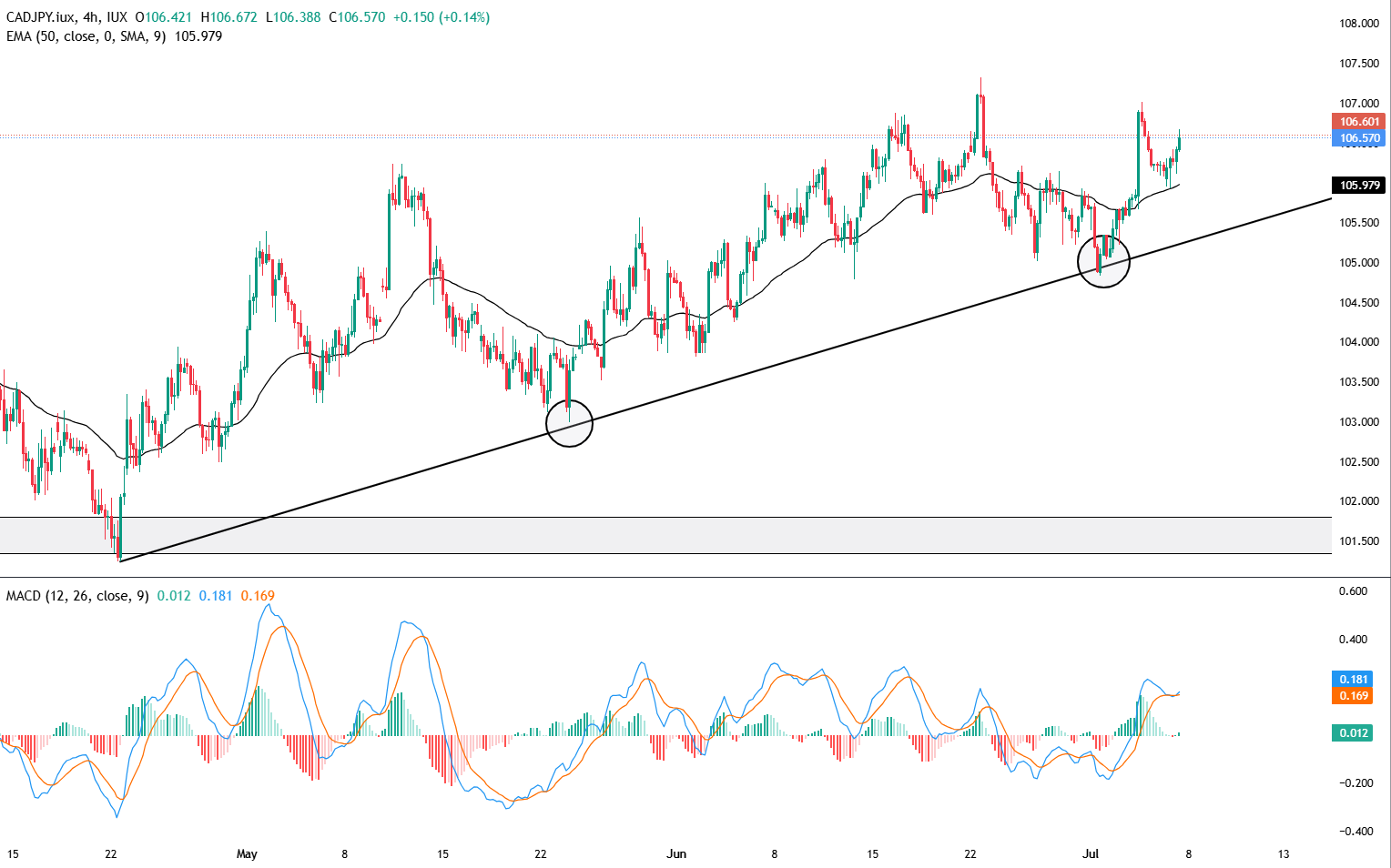For three months since April, the currency has shown strength against the . although at the moment the price still cannot break the small resistance area on the H4 timeframe. but it is expected that the fundamental impulses can move the market more significantly
Figure 1. CAD/JPY Daily Chart – July 07, 2025
The image above shows the formation of a higher high and higher low on the market. We expect the market to form a new higher high this week.
Highlight Fundamental Analysis
Tuesday, July 8, 2025 (JPY Current Account)
Japan posted a current account surplus of JPY 2,258 billion in April 2025, up from JPY 2,188 billion a year earlier, but below market forecasts of JPY 2,560 billion. The goods account deficit narrowed significantly to JPY 32.8 billion from JPY 635.5 billion, as imports totaled JPY 8,801.9 billion and exports reached JPY 8,769.1 billion. However, the services account deficit widened slightly to JPY 768.1 billion from JPY 732.9 billion. Elsewhere, the primary income surplus decreased to JPY 3,589.9 billion from JPY 3,970.1 billion, while the secondary income deficit expanded to JPY 531.1 billion from JPY 413.9 billion.
- April 2025: Surplus of JPY 2.258 trillion, lower than forecast (JPY 2.560 trillion) and down from March (JPY 3.678 trillion).
- Forecast for May 2025: A surplus of JPY 2.940 trillion.
Implication:
- If the actual figure beats expectations – bullish for JPY.
- If the figure misses expectations – bearish for JPY.
Friday, July 11, 2025 (CAD Employment Change)
- May 2025: +8.8 k net change in employment — beat expectations of –11.9 k, up from +7.4 k in April
- Forecast for June 2025: Currently unavailable
Implication:
- Employment growth above consensus – bullish for CAD (tightening monetary outlook).
- Miss or slowdown – bearish CAD, increasing the probability of BOC easing.
Friday, July 11, 2025 (CAD Unemployment Rate)
The in Canada rose to 7.0% in May of 2025, accelerating from 6.9% in the previous month, and hitting its highest level in nearly four years since September 2021. This exceeded market expectations of 6.9%. The rise can be attributed to a significant increase in the number of jobless individuals, which reached 1,600,000, a spike of 51,900. This signals that businesses may be starting to feel the impact of tariffs imposed by the United States. Despite this, net employment saw a modest increase of 8,800, slightly surpassing the expected 5,000. This helped to offset most of the 32,600 job losses from the previous month. The manufacturing sector was hit hardest, experiencing a net decline of 12,200 jobs due to high tariffs on aluminum, steel, and auto industries. Meanwhile, the labor force remained steady at 65.3%.
- May 2025: Unemployment rate rose to 7.0%, up from 6.9% in April—the highest level in nearly four years outside of pandemic data.
- The last three monthly have all shown increases, signaling labor market softness.
Implication:
- Unemployment Rate is a leading indicator of labor market strength and economic vitality.
- A higher-than-expected rate is bearish for CAD. Increased possibility of BoC rate cuts.
- A lower-than-expected rate would be bullish, reinforcing a more hawkish BoC stance.
Technical Analysis
Figure 2. CAD/JPY 4 Hour Chart – July 07, 2025
If we go down to the lower timeframe, H4, we will see a clearer market structure. Until now, the market is still respecting the formed trendline. The rise in CAD/JPY is also confirmed by several indicators. Namely, one of them is that the market is above the 50 EMA and MACD momentum is above the 0 line.
Of course, we can take positions using indicator confirmation, or after the market gives strong confirmation, such as bullish engulfing or hammer candlesticks, which signal a strong buying impulse.
Levels & Zones to trade USD/JPY
Support Zone
- Long-term support 101,724 – 101,376
- Medium-term support 105,090 – 104,743
Resistance Zone
- Long-term resistance 111,476 – 111,128
- Medium-term resistance 108,261 – 107,914
